On Friday, we played the #Threeforged games The Clinic and Timelines. I’m going to make my thoughts fairly brief, but will invite the other players (Steve Mains Daniel Lewis Daniel Fowler and Scott Owen) to offer their thoughts in the comments.
The Clinic
I was very interested in the concept of this game, which involves a group of test subjects being held in a mysterious clinic run by an alien staff. The game has a fun character creation process in which you write pairs of descriptors and memory fragments, and then combine two of those descriptor/memory pairs to make a PC. The setup also has a list of questions that must be answered about the Clinic and the Staff. I love procedures like that, because they tend to get you in the right headspace for the game, and force you to think critically about the setting before you begin play.
Unfortunately, the game is unplayable in its current state. By my estimation, it would have taken us approximately fifteen hours to finish a single game (and I believe it was intended as a one-shot). The setting could have been handled very effectively with a clean, simple scene-framing and resolution system like you might find in Archipelago. Instead, it has layers and layers of mechanical complexity. For example, there are fourteen different scene types, each of which is handled a little differently, mechanically-speaking. There is a competitive card game layered on top of that, the outcome of which dictates not only conflict resolution, but also your character’s ultimate fate in the game. None of this is helped by the fact the rules are not organized in a way that makes it easy to understand what is going on. I’m certain if we were more experienced with the game, we would have been able to handle it all a little more smoothly, but I’m not sure the payoff would be worth investing that kind of time.
I hope the designers go back and playtest and revise, though, because there is definitely a lot to like here in terms of setting. Ultimately, it just needs to be cleaner and simpler, and it would be a winner.
Timelines
We had much better luck with this game, in which the whole group plays out the life (lives?) of a time traveler named Jamie Titor. The setup, which involves playing out several events in Jamie’s life he has regrets about, is really damn cool. The gameplay proper involves each player taking on the role of a different Jamie (Jamie-A, Jamie-B, Jamie-C, and so forth) who has discovered time travel, and is now going back in time to repair the events in his past that are causing him regret. Of course, as you might expect, there are consequences to doing that, and a series of ripples might cause new developments down the timeline, for better or worse.
The fundamentally cool thing about this game is that each new Jamie has a different set of regrets, because they experienced things in a manner different than Jamie Prime (called Jamie-XX), based on how the timeline has been altered. As a result, each new Jamie is going back in time, fiddling with things, making them worse or better, and invoking the ire of other Jamies, who may themselves go back in time to stop a prior Jamie. It’s a wonderful mindfuck, and I really loved it . . . in theory.
While it’s pretty clear the rules technically work, in play, the game has a very practical problem: the amount of bookkeeping that has to be done is bonkers. The game routinely stops, sometimes for 10 minutes or more, as the last player writes down all the changes and adjustments that have to be made before the next player can have their turn. It was a real heartbreaker, because it’s obvious when you sit down to play that what is taking place is really damn cool.
I don’t know who the authors of this game are, but I would happily offer my assistance to get this game into a form that is practical to play. I’m very fond of it.
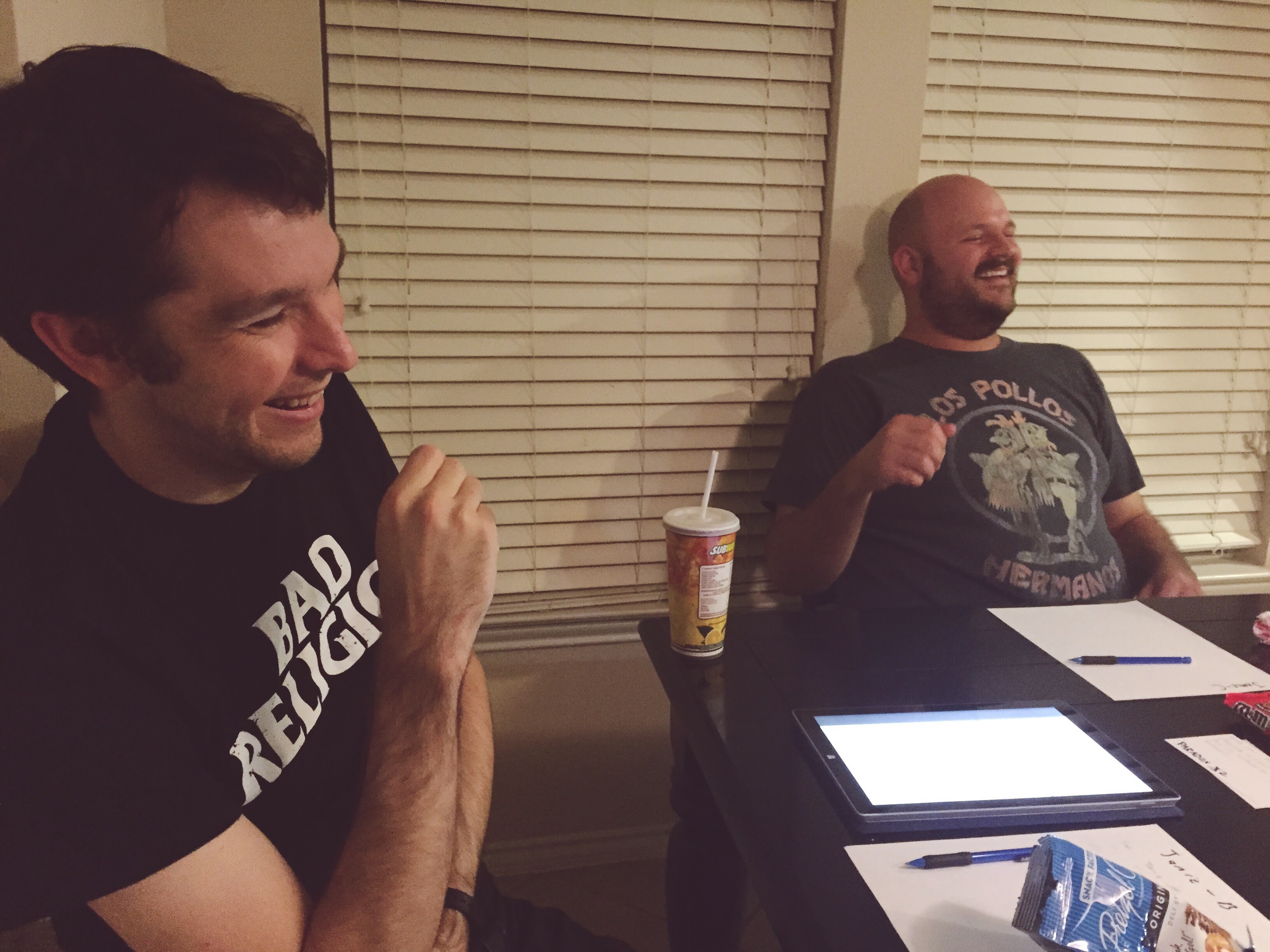
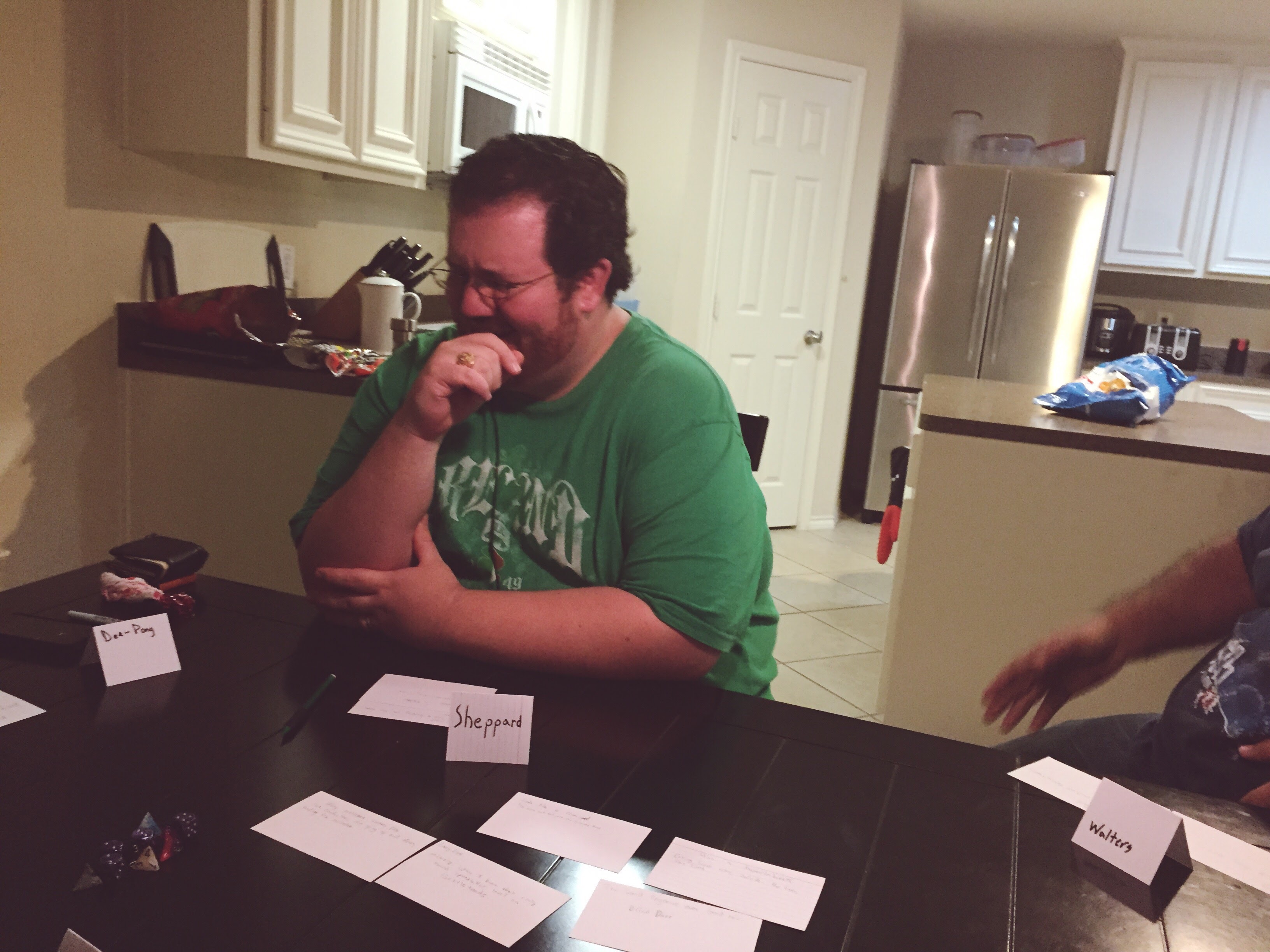
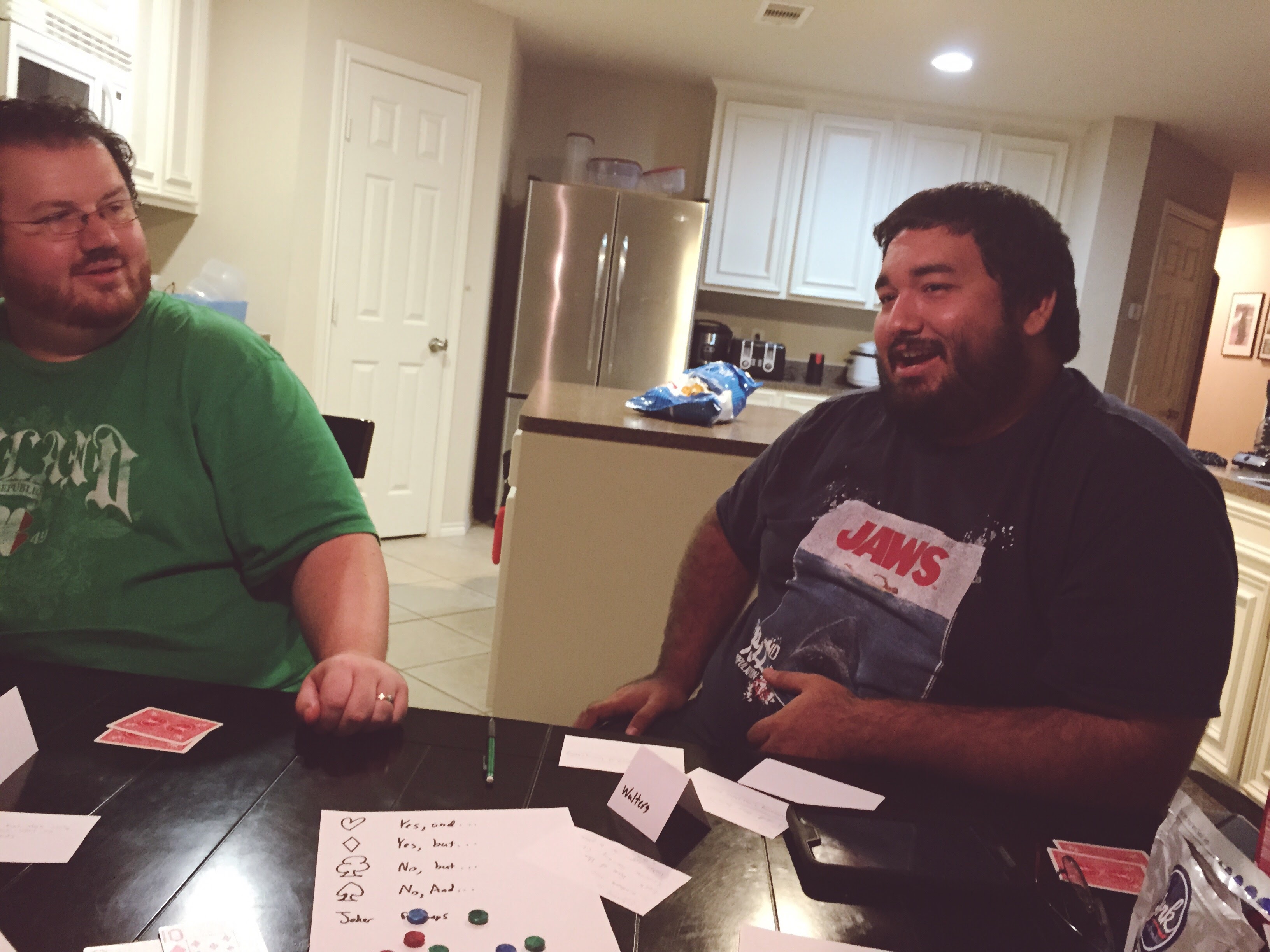
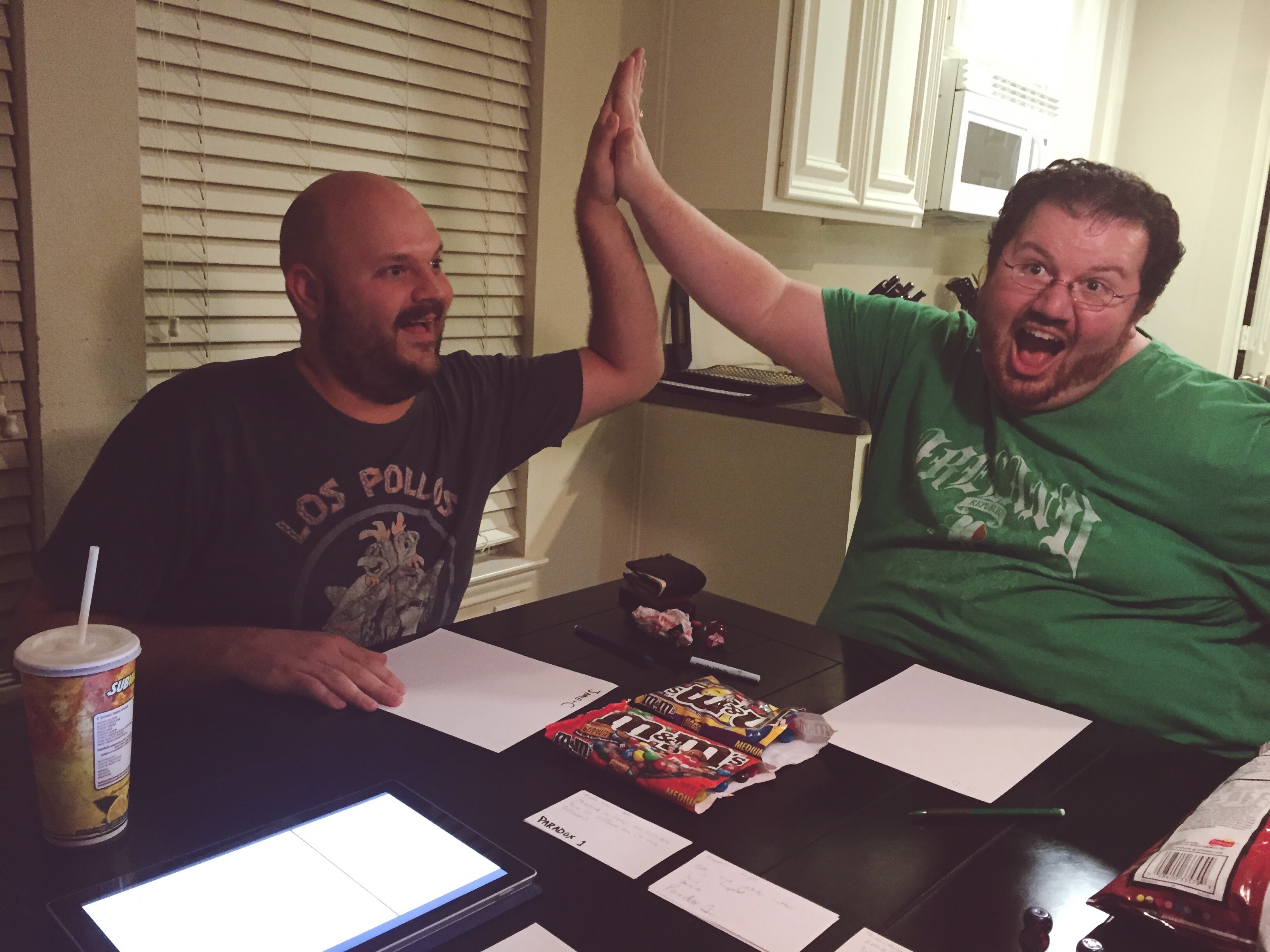
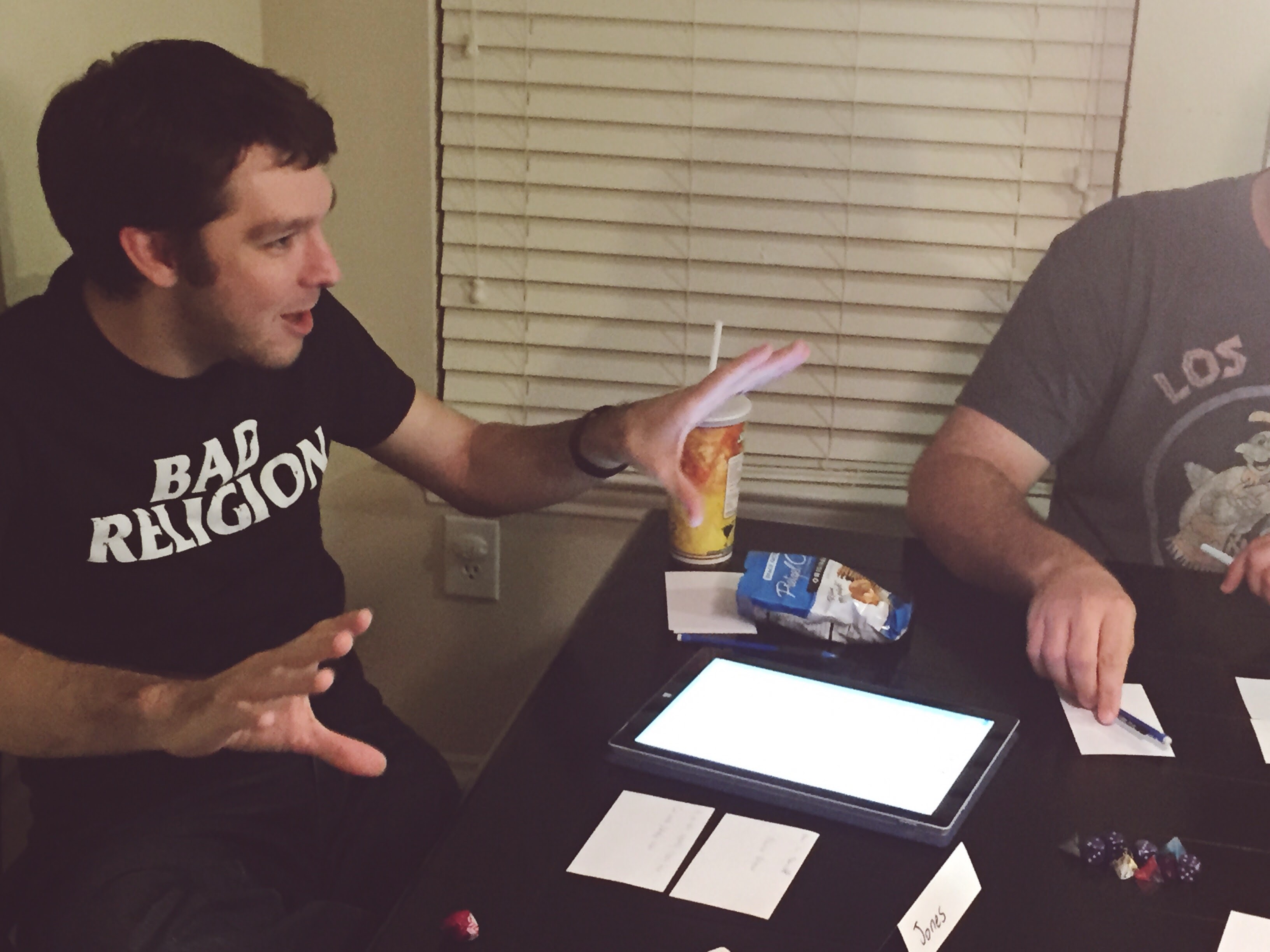
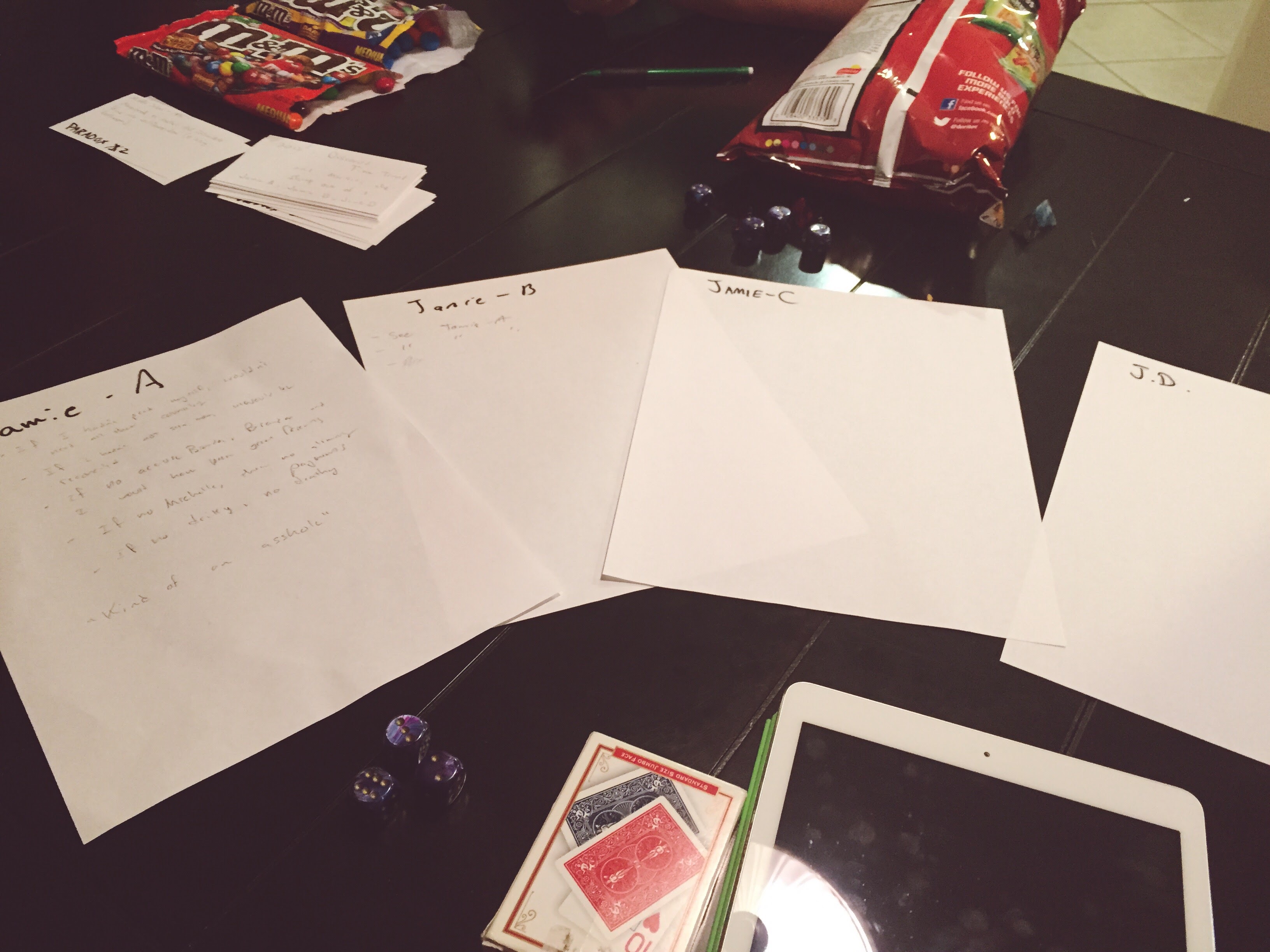
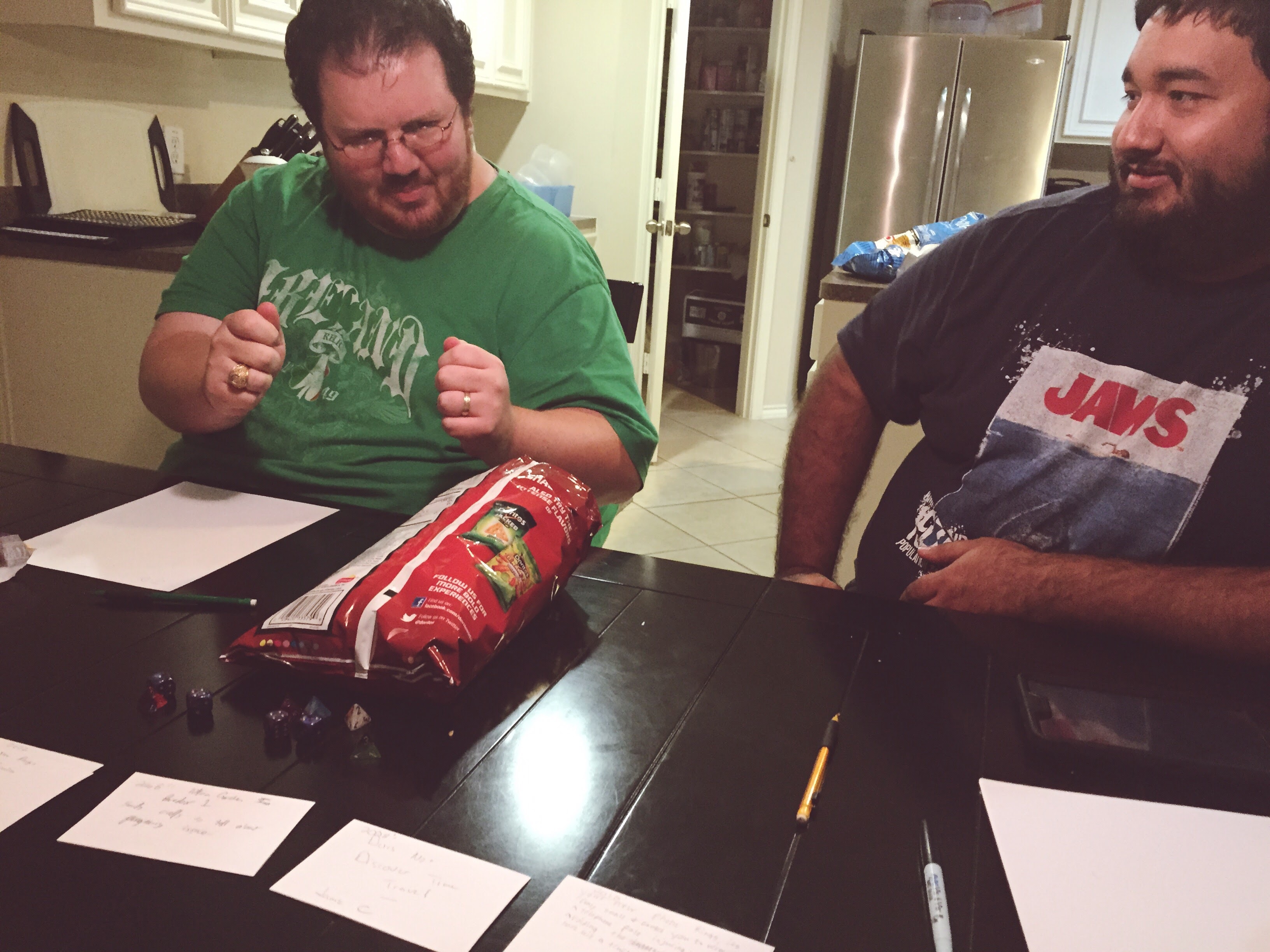

I didn’t anticipate the bookkeeping problem in Timelines when reading it, but now that you mention it I can totally see it.
(I think one of the things I’ve learned from being a game designer is to make a system 4-5 times simpler than my gut wants me to.)
I didn’t anticipate the bookkeeping problem in Timelines when reading it, but now that you mention it I can totally see it.
(I think one of the things I’ve learned from being a game designer is to make a system 4-5 times simpler than my gut wants me to.)
I think you pretty much summed up my thoughts on these two games as well. One thing I’d add, just in case the designers of Timelines see this, is that I’d consider making it easier for ripples to affect later scenes, but making the ripples stop the first time that it fails to affect a scene. We had a couple of instances where changing a scene affected something like 6 scenes down the timeline without doing anything to the 5 scenes in between. This was super weird to try to explain in the fiction.
I think you pretty much summed up my thoughts on these two games as well. One thing I’d add, just in case the designers of Timelines see this, is that I’d consider making it easier for ripples to affect later scenes, but making the ripples stop the first time that it fails to affect a scene. We had a couple of instances where changing a scene affected something like 6 scenes down the timeline without doing anything to the 5 scenes in between. This was super weird to try to explain in the fiction.
I would also add, for the Timelines people, you should be able to crystallize an event the first time a Jamie goes back to it (without having to wait for that event to be re-visited twice to even have a chance to do so). As written, the current rule 1) is weird, because you have to engage the crystallization mechanic, even though it is not possible to crystallize in that first re-visit and 2) causes the game to take much longer than it needs to.
I would also add, for the Timelines people, you should be able to crystallize an event the first time a Jamie goes back to it (without having to wait for that event to be re-visited twice to even have a chance to do so). As written, the current rule 1) is weird, because you have to engage the crystallization mechanic, even though it is not possible to crystallize in that first re-visit and 2) causes the game to take much longer than it needs to.
One more observation about The Clinic: truly, it’s not just 14 different scene types, but rather 53 different scene types, because in addition to the overarching scene goal, you are also working in one of four different Trait focuses, depending on the suit of the card. in terms of cognitive load, it is pretty oppressive.
One more observation about The Clinic: truly, it’s not just 14 different scene types, but rather 53 different scene types, because in addition to the overarching scene goal, you are also working in one of four different Trait focuses, depending on the suit of the card. in terms of cognitive load, it is pretty oppressive.
The Clinic has an interesting premise with a compelling mystery at its core–where are we, how’d we get here, who/what are the “staff,” and how do we escape? You have something to drive toward from the get-go, and until you actually make a break for it, you play out scenes among the patients and staff, amping up the creep factor as you go along.
Setup is fun. Everyone writes down three brief descriptive phrases on note cards, and others will add a memory to each card tied to the descriptor. All of these get put into a common pool, and then players create PCs by choosing two note cards, adding another memory to each, and choosing a last name. NPC patients come, one each, from remaining descriptor/memory pairs. Quick, fun, evocative. Additional setup–deciding what’s off about the clinic and how the staff view the patients–is also pretty cool.
In play, however, there are a lot of fiddly bits without it feeling like they add anything. In order to choose a scene type from four possibilities (represented by four face up cards), you have to look up four different descriptions, which feels like about three too many. Each scene has a scene type determined by card value, a flavoring vice/virtue thing determined by suit, AND the prime PC in each scene is viewed in a certain way by the staff. All of this combined dilutes focus to the point of confusion. You can cross off a memory during a conflict to get a bonus. I have no idea what this means in the fiction. You can get the same type of bonus if you have a relationship with another PC who chooses to help out (likely at their own expense). I’m not positive why they would.
Ultimately, I feel the core mechanic isn’t compelling enough to make the choices inherent in play feel like they really mean anything.
The premise is really solid, and I’d love a pared-down card-driven scene selection process. I want to see the designers take this one and refine it, because I’d happily play a simpler playtested version.
My thoughts on Timeline will have to wait, as I have more Threeforged games to go play!
The Clinic has an interesting premise with a compelling mystery at its core–where are we, how’d we get here, who/what are the “staff,” and how do we escape? You have something to drive toward from the get-go, and until you actually make a break for it, you play out scenes among the patients and staff, amping up the creep factor as you go along.
Setup is fun. Everyone writes down three brief descriptive phrases on note cards, and others will add a memory to each card tied to the descriptor. All of these get put into a common pool, and then players create PCs by choosing two note cards, adding another memory to each, and choosing a last name. NPC patients come, one each, from remaining descriptor/memory pairs. Quick, fun, evocative. Additional setup–deciding what’s off about the clinic and how the staff view the patients–is also pretty cool.
In play, however, there are a lot of fiddly bits without it feeling like they add anything. In order to choose a scene type from four possibilities (represented by four face up cards), you have to look up four different descriptions, which feels like about three too many. Each scene has a scene type determined by card value, a flavoring vice/virtue thing determined by suit, AND the prime PC in each scene is viewed in a certain way by the staff. All of this combined dilutes focus to the point of confusion. You can cross off a memory during a conflict to get a bonus. I have no idea what this means in the fiction. You can get the same type of bonus if you have a relationship with another PC who chooses to help out (likely at their own expense). I’m not positive why they would.
Ultimately, I feel the core mechanic isn’t compelling enough to make the choices inherent in play feel like they really mean anything.
The premise is really solid, and I’d love a pared-down card-driven scene selection process. I want to see the designers take this one and refine it, because I’d happily play a simpler playtested version.
My thoughts on Timeline will have to wait, as I have more Threeforged games to go play!
I have yet to read either the clinic or timelines because my tablet does not want to display them. So I don’t know if we were wildly misunderstanding things or not.
Timeline.
I really love sci-fi and the concept of time travel. I might even enjoy wheeling out a chalk board and trying to keep track of divergent timelines. the book keeping was a slow down but I think my main issue with the game was more a product of how we chose to portray Jimmy. With 5 regret scenes only one was not a product of him being a terrible person and I honestly wasn’t rooting for him to get some sort of happy ending.
I believe we were supposed to play until all Jimmy’s agreed the timeline was good but I’m not sure why there would be any dispute. Also since any visit can potentially change any event afterward in a random way, the game could take a long time and make moving out of chronological order seem pointless. Also, going back and stopping a previous time traveler doesn’t undo their changes but sets up another random ripple of good or bad outcomes.
Clinic.
Loved the setting and the character generation. Could not keep all the charts and details straight in my head and was constantly checking three different lists. My main issue was the escape mechanic. First you need an ace and a token. then you get X obstacles, where X is the number of players, 5 in our case. to get past them you need to have or draw X red cards. If you fail the obstacles remain for the next escapee in addition to his X new obstacles? and he also needs an ace and a token.
Both games have cool settings but need a more understandable and achievable goal. if your game is supposed to last 5 rounds, make sure each round doesn’t take 2 hours. If your game could go on infinitely, make it possible to reach a satisfying ending at any point or when real life time runs out.
I have yet to read either the clinic or timelines because my tablet does not want to display them. So I don’t know if we were wildly misunderstanding things or not.
Timeline.
I really love sci-fi and the concept of time travel. I might even enjoy wheeling out a chalk board and trying to keep track of divergent timelines. the book keeping was a slow down but I think my main issue with the game was more a product of how we chose to portray Jimmy. With 5 regret scenes only one was not a product of him being a terrible person and I honestly wasn’t rooting for him to get some sort of happy ending.
I believe we were supposed to play until all Jimmy’s agreed the timeline was good but I’m not sure why there would be any dispute. Also since any visit can potentially change any event afterward in a random way, the game could take a long time and make moving out of chronological order seem pointless. Also, going back and stopping a previous time traveler doesn’t undo their changes but sets up another random ripple of good or bad outcomes.
Clinic.
Loved the setting and the character generation. Could not keep all the charts and details straight in my head and was constantly checking three different lists. My main issue was the escape mechanic. First you need an ace and a token. then you get X obstacles, where X is the number of players, 5 in our case. to get past them you need to have or draw X red cards. If you fail the obstacles remain for the next escapee in addition to his X new obstacles? and he also needs an ace and a token.
Both games have cool settings but need a more understandable and achievable goal. if your game is supposed to last 5 rounds, make sure each round doesn’t take 2 hours. If your game could go on infinitely, make it possible to reach a satisfying ending at any point or when real life time runs out.
Timelines has a lot of promise.
Timelines has a lot of promise.
Daniel Fowler It’s Jaime, not Jimmy.
Daniel Fowler It’s Jaime, not Jimmy.
Its not my fault if you change things in the past, I distinctly remember his name was Jimmy something…
Its not my fault if you change things in the past, I distinctly remember his name was Jimmy something…
What are you guys trying to say about Jiminy?
What are you guys trying to say about Jiminy?
Timelines! Upon reflection, this is probably my favorite concept of the contest, from what I’ve read or played so far. Going back in time to fix regrets and inevitably screwing things up is a beautiful idea for a game, especially factoring in also regretting the way you tried to fix things, going back in time to fix those, screwing that up, and so on.
That the first thing you do during setup is create a timeline of regrets is super resonant. I’m sure we all have a list of things we wish we could take a mulligan on. Then you play through those regret scenes, which adds some needed specificity to the fiction. The final point on the timeline is the point at which Jamie Titor invents time travel and decides to go back to make it all better. All of this is spun fucking gold, as far as I’m concerned.
Afterward, players take turns portraying different versions of Jamie as he goes back to try and alter what happened in previous scenes. You play each scene out and then make dice rolls to see if any later regret points are affected by ripples in the timeline (which is where we really start to see the influence of the card game Chrononauts [Look into it! It’s fun.]). If yes, then each scene affected by Jamie’s meddling gets rewritten to replace its previous version. After my scene, we had to rewrite every single other regret.
The next player can’t even start their scene until all of this is done, because they have to see what it is about the new versions of the regrets it is that they regret and then write all of that down. All of this bookkeeping takes, conservatively, about a billion years. It even functions as intended, I think. It works, and the ripple effect is cool. I love love love the fiction that comes out of this, and how you start eyeing other Jamies as the problem that needs to be circumvented. How your life is messed up and of course you can’t fix it and of course you’re going to try anyway. But the handling time on this game is its death knell.
I wouldn’t want to play this version of the game again, but would kill to play a revised version somewhere down the line. (But then I’d probably regret having killed somebody.)
Timelines! Upon reflection, this is probably my favorite concept of the contest, from what I’ve read or played so far. Going back in time to fix regrets and inevitably screwing things up is a beautiful idea for a game, especially factoring in also regretting the way you tried to fix things, going back in time to fix those, screwing that up, and so on.
That the first thing you do during setup is create a timeline of regrets is super resonant. I’m sure we all have a list of things we wish we could take a mulligan on. Then you play through those regret scenes, which adds some needed specificity to the fiction. The final point on the timeline is the point at which Jamie Titor invents time travel and decides to go back to make it all better. All of this is spun fucking gold, as far as I’m concerned.
Afterward, players take turns portraying different versions of Jamie as he goes back to try and alter what happened in previous scenes. You play each scene out and then make dice rolls to see if any later regret points are affected by ripples in the timeline (which is where we really start to see the influence of the card game Chrononauts [Look into it! It’s fun.]). If yes, then each scene affected by Jamie’s meddling gets rewritten to replace its previous version. After my scene, we had to rewrite every single other regret.
The next player can’t even start their scene until all of this is done, because they have to see what it is about the new versions of the regrets it is that they regret and then write all of that down. All of this bookkeeping takes, conservatively, about a billion years. It even functions as intended, I think. It works, and the ripple effect is cool. I love love love the fiction that comes out of this, and how you start eyeing other Jamies as the problem that needs to be circumvented. How your life is messed up and of course you can’t fix it and of course you’re going to try anyway. But the handling time on this game is its death knell.
I wouldn’t want to play this version of the game again, but would kill to play a revised version somewhere down the line. (But then I’d probably regret having killed somebody.)
Steve Mains-B goes back and takes games less seriously.
Steve Mains-B goes back and takes games less seriously.
…Sees some other jerk become celebrated billionaire game designer based on the same exact concept Steve Mains-A decided not to pursue, because nahhhh.
…Sees some other jerk become celebrated billionaire game designer based on the same exact concept Steve Mains-A decided not to pursue, because nahhhh.
I agree with the above comments regarding Timeline and The Clinic for the most part. I have just a couple of additional notes.
1: Timeline was an exceptional concept that I would love to play again with a more streamlined mechanic. If the rules could be adjusted to reduce the amount of time and paper wasted it would be a great game. It was said several times during play that if we had an overhead projector or a computer program to facilitate the tracking of changes and the multiple arches with in the story we would have had a much better time. Increasing the ease of crystallizing, stopping ripples at the first non-change, making the events in some small way connected so it makes sense for them to change, are all solid updates that would help the game and make it sing. Creator of Timeline please make a more succinct version of the game so that we may enjoy it to the fullest. Jimahl needs you. Jimila XX will be beautiful, Jimmey XX will be perfect. All Hail we XX.
2: If I am being honest The Clinic needs to be torn down to its base concepts and reworked. When we played I felt like I was trapped in a futuristic hospital hallway with a tide of paper and preposterous probabilities slowly rising to extinguish my zeal for life. There is just too much s#!+ going on that does nothing to enhance the story. I feel like the game may have started some where interesting and then because of the amount of words that had to be added each round ideas where just slapped on. Layer upon layer of needless additions to the mechanics taking an idea and distorting it in to a monster. Creator of The Clinic burn this paper mache abomination to the ground and use only the strong conceptual bits that survive to rebuild.
I agree with the above comments regarding Timeline and The Clinic for the most part. I have just a couple of additional notes.
1: Timeline was an exceptional concept that I would love to play again with a more streamlined mechanic. If the rules could be adjusted to reduce the amount of time and paper wasted it would be a great game. It was said several times during play that if we had an overhead projector or a computer program to facilitate the tracking of changes and the multiple arches with in the story we would have had a much better time. Increasing the ease of crystallizing, stopping ripples at the first non-change, making the events in some small way connected so it makes sense for them to change, are all solid updates that would help the game and make it sing. Creator of Timeline please make a more succinct version of the game so that we may enjoy it to the fullest. Jimahl needs you. Jimila XX will be beautiful, Jimmey XX will be perfect. All Hail we XX.
2: If I am being honest The Clinic needs to be torn down to its base concepts and reworked. When we played I felt like I was trapped in a futuristic hospital hallway with a tide of paper and preposterous probabilities slowly rising to extinguish my zeal for life. There is just too much s#!+ going on that does nothing to enhance the story. I feel like the game may have started some where interesting and then because of the amount of words that had to be added each round ideas where just slapped on. Layer upon layer of needless additions to the mechanics taking an idea and distorting it in to a monster. Creator of The Clinic burn this paper mache abomination to the ground and use only the strong conceptual bits that survive to rebuild.